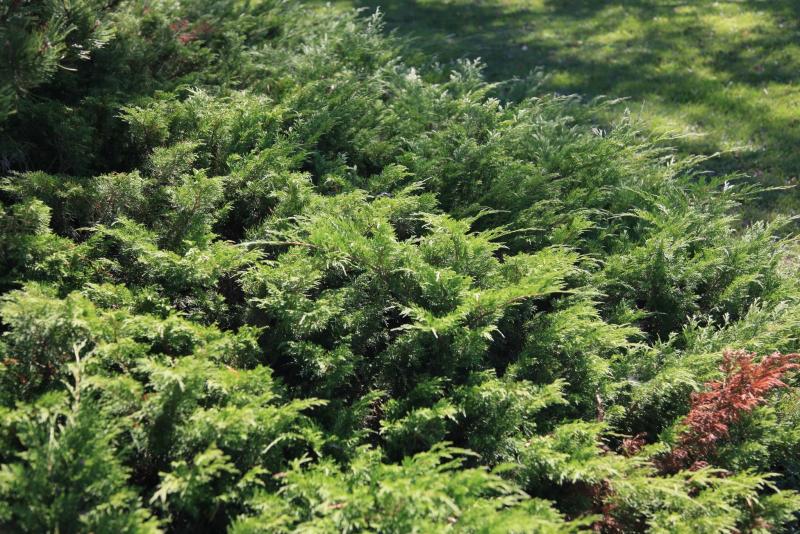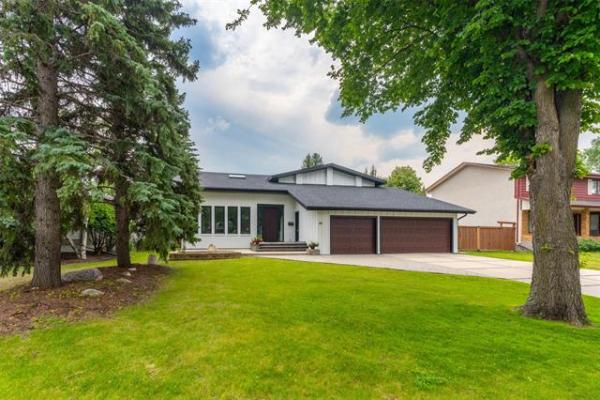From time to time I get inquiries about the browning of evergreen ground junipers. Typically these evergreen plants are planted in low lying ground beds in groupings of 5 to 25, or even larger.
Initially, the clusters of low-lying evergreen shrub junipers look quite attractive. With time and as the plants become increasingly stressed, the browning of the leaves turns grey. The greying means part of the shrub is dead.
The causal agent is Juniper blight, phomopsis juniperovora. This fungal disease is fatal to ground junipers.
Typically, ground junipers are planted very close together where they are competing for space, light, soil nutrition and water. This is the greatest of their difficulties.
The disease is spread readily by overcrowded plants, as well as the most significant stress factor for these plants: overwatering. Any regular irrigation by sprinkling systems during the warm seasons, especially during the day or evening, will also increase the spread of this disease.
Early infections, which usually show up as a straw-yellow colour (often called flagging), can be pruned out with sterilized pruning tools when the plants are totally dry. Infected twigs and branches should be pruned off about two inches back into live wood, and then all pruned plant parts should be destroyed. Sterilize the tools before each new plant is pruned, using either a mix of bleach and water, methyl hydrate, or rubbing alcohol. Proper sterilization will kill fungal disease organisms.
Remove infected parts of flagging shrubs as soon as possible, as well as shrubs that are obviously dead. The disease will persist in dead parts of the shrub. Utilize a copper fungicide spray such as Bordo around the area of flagging. This may help in reducing the spread of the disease.
The spraying is ideally done in late spring and again in early to mid-July. Aggressive strains of this fungus may not be treatable at all.
All dead junipers should be dug up including their roots and properly disposed. Replace the removed soil with clean topsoil from a reliable soil supplier.
To help juniper shrubs avoid this disease in the first place, make sure the junipers are planted with space in between each plant to get a successful establishment of all the plants. Plants must be spaced at a greater distance from one another when first established.
On a regular basis the plants should be pruned back at least two inches so that they are not touching one another. Pruning the junipers in this manner is a lot of work, but this must be done to significantly reduce the spread of this fungal disease.
This can be a very tedious process, but if it is correctly done, this approach can prevent new plants from getting contaminated with the disease from nearby older plants.
Here is a recommendation that you rarely hear: Treat new plants with a copper fungicidal spray such as Bordo prior to being planted. The nursery stock may have been infected from nearby diseased plants that may not have been removed from the nursery beds.
Another factor affecting the spread of the juniper disease is the timing and quantity of watering. Avoid watering ground junipers in the period of the day from late morning through the afternoon to the evening.
In principle, watering plants early in the morning is one way of reducing the potential for the spread of diseases. This action in fact can apply to all your evergreen and non-evergreen ornamental plants.
Well-maintained and well-pruned junipers can look stunning in a yard and help to visually anchor plantings around them. By following these recommendations, you can give your juniper plants many years of healthy life.
Michael Allen M.Sc.F., RPF (ret’d) is a consulting urban forester, tree diagnostician and certified arborist. He owns Viburnum Tree Experts. He can be reached at 204-831-6503 or 204-223-7709, or at viburnumtrees@shaw.ca His web site is treeexperts.mb.ca




